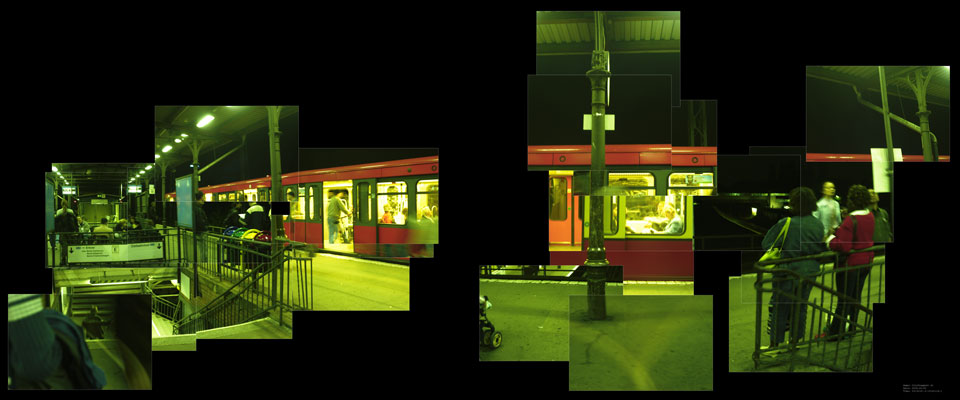>> CityFragment (2004-2007)

CityFragment 41 [2004] – 60x112inches
_CityFragment is about perception. Selective perception. Fragmented perception. How does perception work? Is it possible to transfer it or to get close to this process in a photograph?
_CityFragments are pictures that work similar to the eye. Many pictures make a whole. As such these pictures are (as a whole) quickly grasped, even though, single pictures do not merge into each other. The quick glance reveals a correct picture with all the information necessary. If you look closer, however, you discover breaks, objects not correctly aligned, half objects, indicated events …
_Perception is a high-speed process. A glance has the duration of about 1/250 second. A city Fragment is due to the method of shooting it like perception slowed down. It is shoot over several seconds or minutes, taking a lot of single pictures (glances) that are composed and set together as one picture. As a whole a CityFragment has to be seen as a picture showing time elapsing, not as a point in time as it is usually done in photography. Within this timeframe something happens. The scene changes, persons appear, my point of view or the alignment of the camera changes slightly.
_City Fragment – the name already says it – deals with urbanity and the processes running within it. However the processes are not shown in full length. There are parts of it visible, broken apart from the whole, fragmented with pieces missing, referring to the duration without showing it fully. It is both the scenery as well as the processes running within it that make a CityFragment a fragment of the City.
_Although the way CityFragments are taken is similar to the perception of the eye – many glances make the picture – the result is not the same. City Fragments are disharmonic pictures. They are disharmonic because the glances do not merge into each other. Mistakes are not corrected. Our brain does it automatically; the camera does not, which results in a picture that look fragmentary.
_The aim is a questioning of perception and to attempt to approach perception on a photographic level as well as the description of the urban process-bound living space.
_Catalogue [PDF|7mb]
You must be logged in to post a comment.